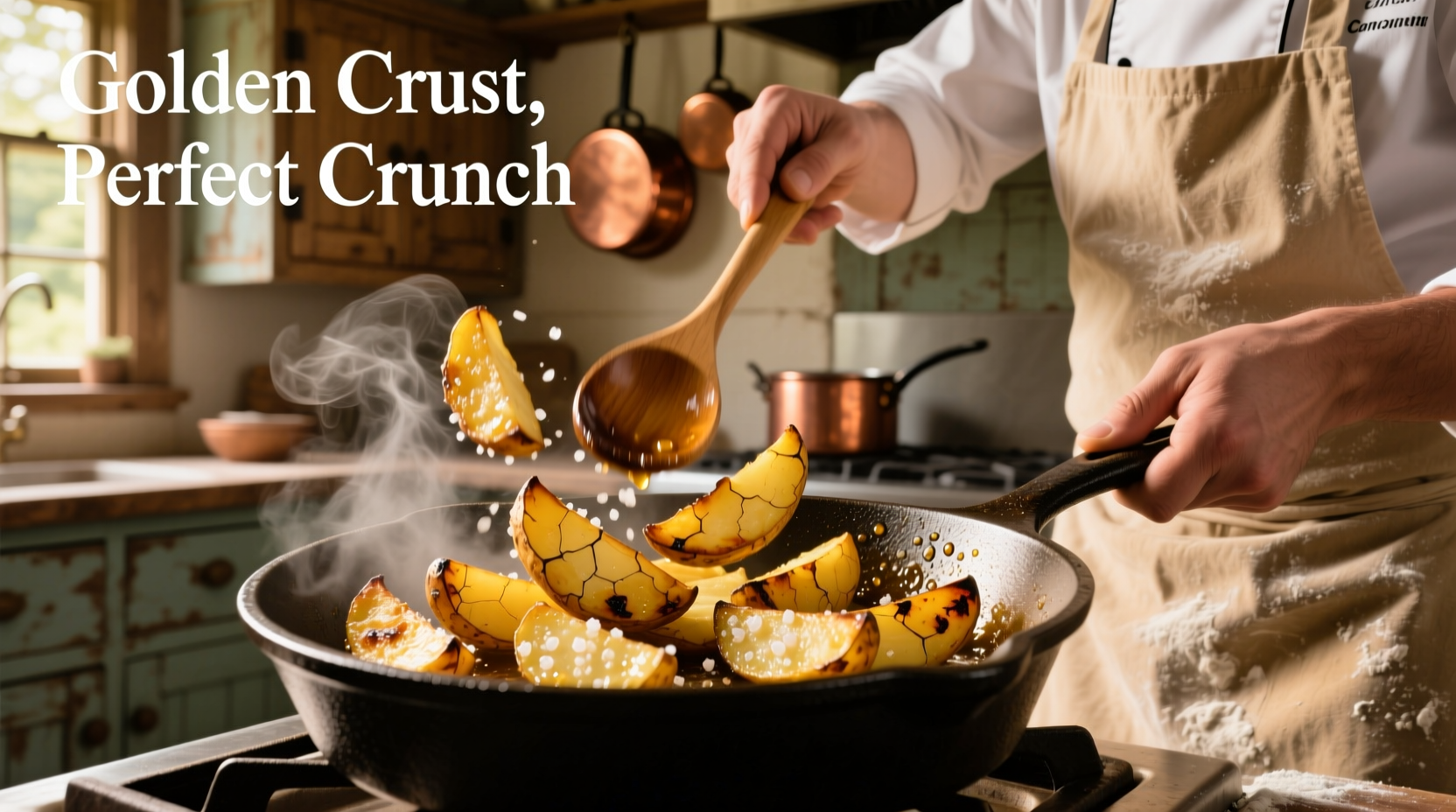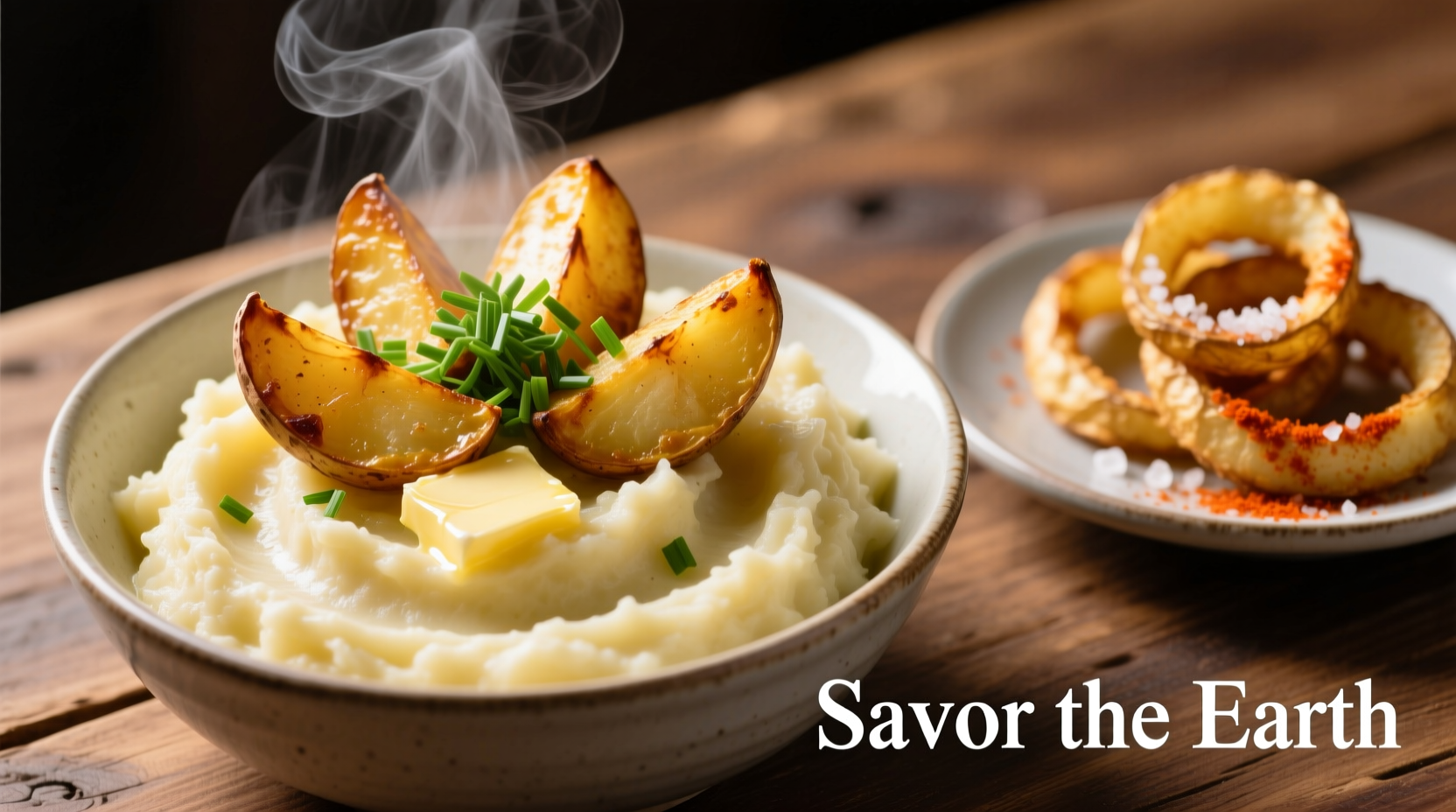Discover 15 versatile potato dishes spanning global cuisines, cooking times, and dietary needs. From quick weeknight meals to special occasion recipes, this guide provides practical techniques, variety-specific recommendations, and chef-approved methods to transform this humble ingredient into extraordinary meals.
As one of the world's most versatile ingredients, potatoes offer endless culinary possibilities across cultures and cooking styles. With over 368 million tons produced globally each year according to the Food and Agriculture Organization, potatoes remain a kitchen staple for good reason. This comprehensive guide moves beyond basic preparation to deliver actionable techniques that professional chefs use to maximize flavor, texture, and nutritional value in every potato dish you create.
Understanding Potato Varieties and Their Best Uses
Not all potatoes perform equally in every dish. Selecting the right variety dramatically impacts your final result. The USDA classifies potatoes into three primary categories based on starch content, each suited to specific cooking methods:
| Variety Type | Best For | Avoid For | Common Examples |
|---|---|---|---|
| Starchy (High Starch) | Mashed potatoes, French fries, baked potatoes | Salads, dishes requiring firm texture | Russet, Idaho, Yukon Gold |
| Waxy (Low Starch) | Salads, soups, roasting, boiling | French fries, fluffy mashed potatoes | Red Bliss, Fingerling, New Potatoes |
| All-Purpose | Most cooking methods, versatile applications | Specialized dishes requiring extreme starch properties | Yukon Gold, Charlotte, German Butterball |
According to research from the International Potato Center, starchy potatoes contain 20-22% dry matter compared to waxy varieties at 16-18%, explaining their different behaviors when cooked. This scientific understanding helps explain why russets create fluffy mashed potatoes while red potatoes maintain their shape in salads.
Global Potato Dishes Worth Mastering
European Classics with Modern Twists
European cuisine offers some of the most beloved potato preparations. Traditional German Kartoffelsalat differs significantly from American versions by using warm broth-based dressing rather than mayonnaise, allowing the potatoes to absorb flavors more effectively. For authentic results, use waxy potatoes and dress while still warm.
French Pommes Anna represents the pinnacle of layered potato dishes. This centuries-old technique requires careful slicing and layering with butter between each layer, then slow baking until golden. The key to success? Using a mandoline for uniform 1/8-inch slices and pressing down periodically during baking to ensure proper layering.

American Comfort Food Elevated
While hash browns remain a breakfast staple, professional chefs elevate this simple dish through technique. The secret to perfectly crisp hash browns lies in partially cooking the potatoes first (par-cooking), then shredding and pressing out excess moisture before the final high-heat sear. This two-stage process creates maximum crispness without burning.
Potato casseroles transform weeknight meals with minimal effort. For the best texture, combine starchy and waxy potatoes—russets provide structure while Yukon Golds add creaminess. Adding a touch of Dijon mustard to the cream mixture enhances flavor without overpowering, a technique borrowed from professional kitchens documented by America's Test Kitchen.
Time-Sensitive Cooking Solutions
Under 20 Minutes: Emergency Meal Solutions
When time is critical, focus on techniques that maximize surface area for faster cooking. Potato 'Rosti' pancakes work perfectly here—shred potatoes finely, squeeze out excess moisture, then cook in a hot skillet for 6-8 minutes per side. The high surface-to-volume ratio ensures quick cooking while creating delicious crisp edges.
For microwave efficiency, slice potatoes thinly (1/8-inch), arrange in a single layer on a microwave-safe plate with a splash of water, and cover with a damp paper towel. Three minutes produces par-cooked potatoes ready for finishing in a hot skillet—a technique validated by BBC Good Food's time-saving recipe tests.
Special Occasion Showstoppers (45+ Minutes)
Dauphinoise potatoes represent the ultimate in elegant potato presentations. Modern chefs have refined this classic by incorporating garlic confit into the cream mixture and finishing under the broiler for perfect browning. The critical step? Slicing potatoes uniformly thin (1/16-inch) using a mandoline for even cooking throughout.
Potato Gnocchi requires attention to moisture content. Professional chefs recommend using russet potatoes that have been baked rather than boiled, as this reduces water content naturally. The ideal dough should contain just enough flour to hold together—typically 1 cup per 2 pounds of potatoes—creating light, tender results rather than dense dumplings.
Dietary Adaptations Without Sacrificing Flavor
For gluten-free diets, potatoes naturally excel as a base ingredient. When making potato pancakes or croquettes, replace breadcrumbs with crushed gluten-free crackers or panko for coating. The key binding agent remains the same: properly cooled mashed potatoes with adequate starch development.
Vegan adaptations work beautifully with potatoes. For creamy textures without dairy, blend boiled potatoes with raw cashews and nutritional yeast. This creates a rich, cheesy flavor profile while maintaining the comforting texture expected in dishes like scalloped potatoes. Roasted garlic adds depth without animal products.
Professional Techniques for Home Cooks
Seasoning potatoes properly requires understanding when to add salt. For boiled potatoes, add salt to the water (1.5 tablespoons per gallon) to season from within. For roasted potatoes, toss with oil first, then season—this prevents salt from drawing out moisture too early and compromising crispness.
The 'double-cook' method transforms French fries and roasted potatoes. First cook at 300°F until tender throughout, then increase heat to 400°F for crisping. This two-stage process ensures fully cooked interiors with perfectly crisp exteriors, a technique perfected by chefs at top restaurants worldwide.
When making mashed potatoes, avoid overworking the starch. Use a ricer or food mill rather than a blender or food processor, which releases too much starch and creates a gummy texture. Warm dairy additions prevent temperature shock that can make potatoes gluey.
Common Potato Mistakes and How to Avoid Them
One frequent error involves using the wrong potato variety for the dish. Waxy potatoes in mashed preparations create a gluey texture, while starchy potatoes in salads fall apart. Match variety to cooking method for optimal results.
Another common issue: adding cold dairy to hot mashed potatoes. Always warm milk, cream, or butter before incorporating to maintain proper starch structure. Cold additions cause potatoes to seize up and become gummy.
For roasted potatoes, overcrowding the pan creates steam instead of crispness. Use a single layer with space between pieces, and rotate the pan halfway through cooking for even browning on all sides.











 浙公网安备
33010002000092号
浙公网安备
33010002000092号 浙B2-20120091-4
浙B2-20120091-4